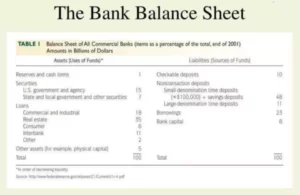No products in the cart.
Horizontal Analysis Formula Calculator Example with Excel Template Leave a comment
Content
- Relevance and Use of Horizontal Analysis Formula
- Horizontal Analysis Interpretation Formula Financial Statement
- Spotting Trends
- Difference between Horizontals and Verticals analysis
- Horizontal Analysis of Financial Statement (Formula and Calculation)
- Horizontals analysis advantages and disadvantages
From 2021 to 2020, we’ll take the comparison year (2021) and subtract the corresponding amount recorded in the base year (2020).
Worthy of note at this time is that for a trend analysis to be truly meaningful, it must include multiple periods, be they months, quarters, or years. The above is only meant to illustrate the process and, being for one term only, cannot be seen as decisive. Horizontal analysis may be executed in a manner that makes a company’s financial health look way better than it is.
Relevance and Use of Horizontal Analysis Formula
It is also useful for inter-firm or inter-departmental performance comparisons as one can see relative proportions of account balances, regardless of the size of the business or department. It means the changes are shown as a percentage https://www.bookstime.com/ of a base item in the statement and there are no representations for variance. Companies and business owners like you make use of financial analysis techniques like horizontal analysis for both internal and external purposes.
This can be helpful in making decisions about whether to invest in a company or not. Horizontal analysis is the use of financial information over time to compare specific data between periods to spot trends. This can be useful because it allows you to make comparisons across different sets of numbers. Horizontal and vertical analysis are two types of analysis you can do that use simple mathematical formulas. Horizontal analysis is the comparison of historical financial information over a series of reporting periods. By analyzing horizontal analysis of both Apple and Microsoft’s financial statements, we can see that Microsoft had higher Revenue growth and Gross Profit Margin than Apple in both years.
Horizontal Analysis Interpretation Formula Financial Statement
Exhibit 15.1 and 15.2 present the comparative balance sheet and profit and loss account respectively of a company with the amount of increase or decrease and percentage changes shown. Creditors and investors use vertical analysis to compare a company’s financial performance to that of others in the same industry. Horizontal analysis is the evaluation of an organization’s financial performance over many reporting periods. Side by side they do this to determine if the company’s performance is improving or declining. Horizontal analysis is important because it allows you to compare data between different periods and makes it easier to identify changes in trends.
- On the other hand, comparability constraint dictates that a company’s financial statements and other documentation be such that they can be evaluated against other similar companies within the same industry.
- These ratios make problems related to the growth and profitability of a company evident and clear.
- The 50% still represents a positive outcome from 2018 even though it still represents an overall decline in the growth of revenue.
- It involves comparing financial information from one year to another and analyzing the differences between them.
- Exhibit 15.1 and 15.2 present the comparative balance sheet and profit and loss account respectively of a company with the amount of increase or decrease and percentage changes shown.
All these are taken into account in relation to identifying your past financial performance and your prospects for the future. Also, trends are identified to define the actual performance of the company in relation to its first accounting year and how it is predicted to fare as time passes. Vertical analysis is more often used by creditors and investors to compare a company’s financial performance to others in the same industry. Analysts and investors will be able to identify factors that drive growth over a period of time. This also makes it easier to see growth patterns and trends, like seasonality. With this approach, you can also analyze relative changes between lines of products to make more accurate predictions for the future.
Spotting Trends
Looking at horizontal analysis, you can easily see why it’s also known as trend analysis. It helps you compare the financial position and performance of your business from one period to the next. Using your findings, you know what’s working well, and can easily see areas that need improvement and require attention. You may also opt to calculate income statement ratios like gross margin and profit margin. From this limited analysis of comparative financial statements, an analyst would conclude that operating performance for the latest year appeared favourable.
Using Wisesheets, you can set up a template that automatically retrieves the data of any company/s you are looking for automatically by changing the ticker. We’re firm believers in the Golden Rule, which is why editorial opinions are ours alone and have not been previously reviewed, approved, or endorsed by included advertisers. Editorial content from The Ascent is separate from The Motley Fool editorial content and is created by a different analyst team.
Difference between Horizontals and Verticals analysis
We will also apply this formula to each line item to calculate its percentage change. Rather than comparing revenues from 2019, Horizontal Analysis still compares the revenues of 2020 to 2018 (the base year). Whether you perform this analysis every fiscal year or every quarter, the information it provides is well worth the time and effort required. Another option is to add as many years as would fit on the page without providing a variance, allowing you to view overall changes by account over time.
What is the formula for horizontal analysis for financial statements?
Example of Horizontal Analysis
To calculate the percentage change, first select the base year and comparison year. Subsequently, calculate the dollar change by subtracting the value in the base year from that in the comparison year and divide by the base year. The result is then multiplied by 100.
Indeed, sometimes companies change the way they break down their business segments to make the horizontal analysis of growth and profitability trends more difficult to detect. This results in variations since balances for each period are compared sequentially. You can make your current year (or quarter) look better if you choose historical periods of poor performance as your base comparison year. Cash in the current https://www.bookstime.com/articles/horizontal-analysis year is $110,000 and total assets equal $250,000, giving a common-size percentage of 44%. If the company had an expected cash balance of 40% of total assets, they would be exceeding expectations. This may not be enough of a difference to make a change, but if they notice this deviates from industry standards, they may need to make adjustments, such as reducing the amount of cash on hand to reinvest in the business.





